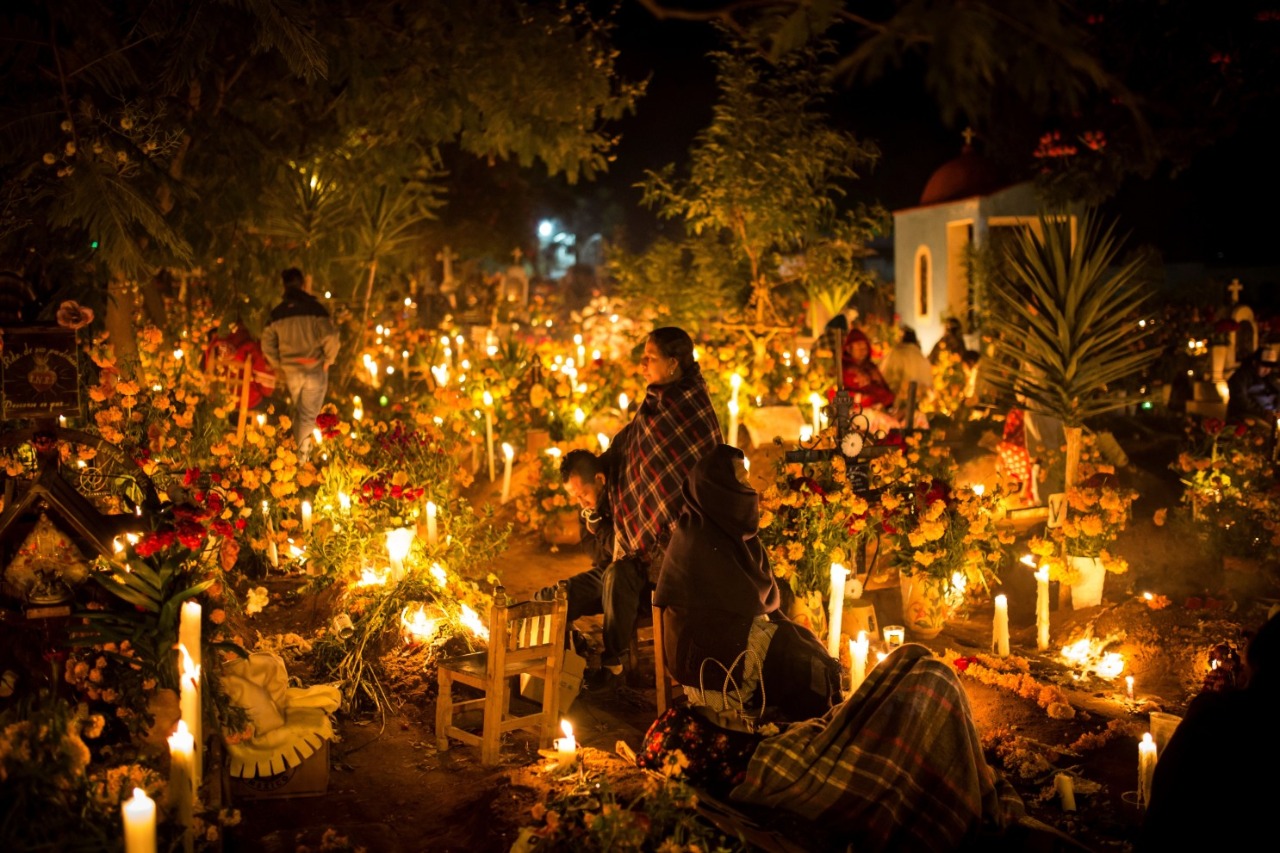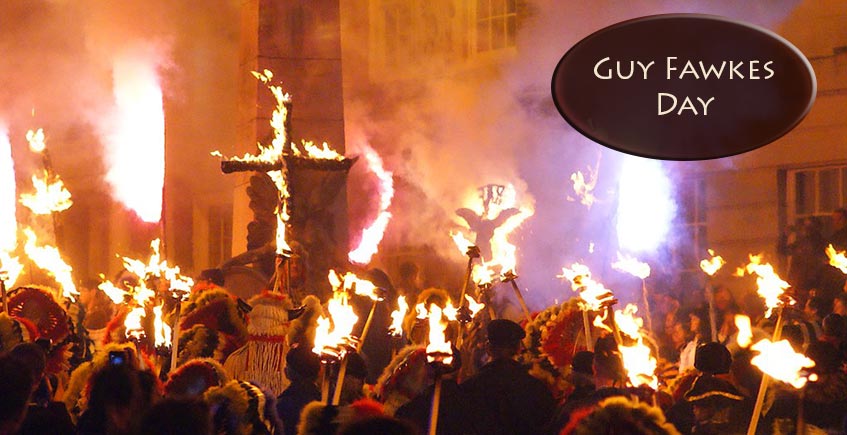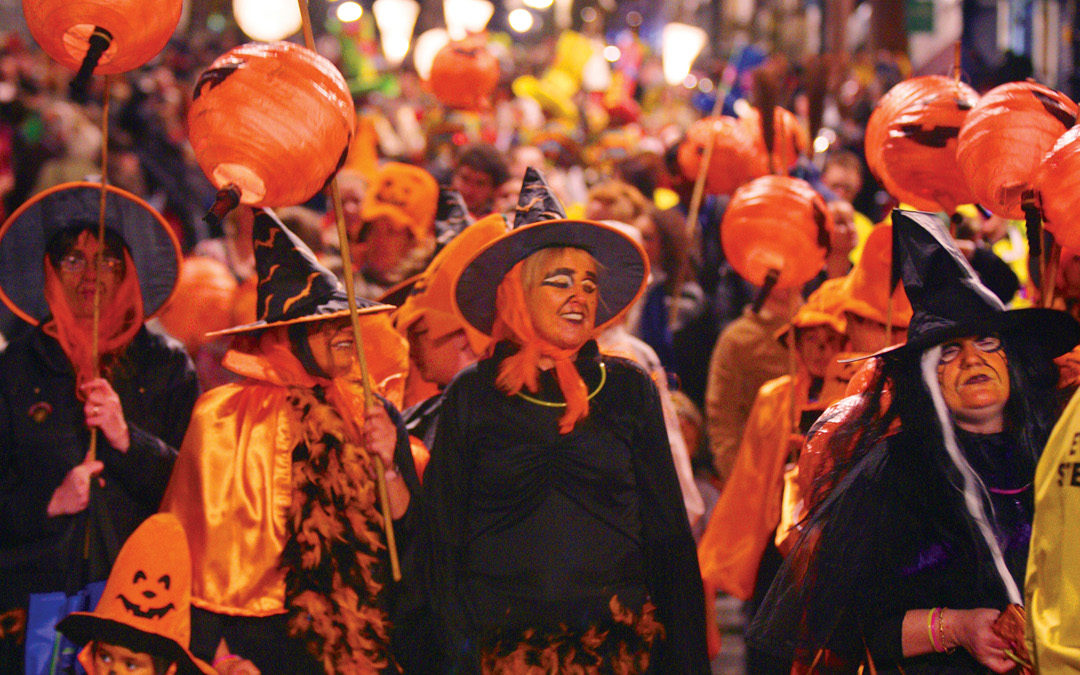Each country has a different, unique version of Halloween. Let’s explore the style of organizing the biggest costume festival of the year in some special cultural regions below.
Held annually on October 31st, Halloween is recognized as one of the oldest holidays in the world. While it has roots in ancient festivals and religious practices, the festival continues to thrive and evolve in many countries today.
In regions like Ireland, Canada, and the United States, Halloween is marked by costume parties and the beloved tradition of trick-or-treating. Meanwhile, in Mexico and other Latin American countries, the vibrant Día de los Muertos (Day of the Dead) serves as a heartfelt tribute to deceased loved ones and ancestors. In the UK, the day is observed as Guy Fawkes Day on November 5th, celebrated with bonfires and fireworks.
/cloudfront-us-east-1.images.arcpublishing.com/dmn/5CE4T632URECTJXGW6PMOGKT3U.jpg)
Día de los Muertos in Latin America
In Mexico and across Latin America, Día de los Muertos unfolds over three days from October 31 to November 2. This celebration honors those who have passed away. Families create altars in their homes adorned with flowers, photographs, and the favorite foods and drinks of the departed. It’s common to include a wash basin and towels so that the spirit can cleanse itself before joining the festivities.
The celebration features traditional foods such as pan de muerto (bread of the dead), candy, and treats shaped like skulls and skeletons. Candles and incense are burned to guide the spirits home, while families clean and decorate graves with flowers and wreaths. On November 2, loved ones gather at the gravesites for picnics, reminiscing together, often accompanied by tequila and lively mariachi music.

Guy Fawkes Day in the UK
As night falls on November 5, bonfires blaze across the UK, with people lighting fireworks and burning effigies. While celebrated around the same time as Halloween, this British observance is distinct and rooted in its own historical context.
Most Britons distanced themselves from Halloween when Martin Luther’s Protestant Reformation took hold, as the new faith did not acknowledge saints and thus had little reason to celebrate All Saints’ Day. Instead, they adopted a different ritual, giving rise to Guy Fawkes Day. This day commemorates the execution of the infamous traitor Guy Fawkes, marked by festive gatherings and bonfire celebrations.

Halloween in Ireland
Ireland is the birthplace of Halloween, and the festival continues to hold a special place in the hearts of many, including those in the United States. Celebrations often involve gatherings with neighbors and friends, filled with games and merriment.
One popular game is snap-apple, where an apple is suspended from a doorway or tree branch, and players attempt to bite into the hanging fruit. In addition to apple hunts, parents often organize candy treasure hunts for their children. Another favorite involves a card game where cards are placed face down on a table with candies and coins hidden beneath. Kids pick a card, unveiling their hidden prizes.
A traditional treat enjoyed during Halloween in Ireland is barmbrack, a fruit cake that can be bought or homemade. Legend has it that a wrapped object baked inside the bread can predict the eater's future—finding a ring indicates impending marriage, while a piece of straw foretells a prosperous year.
Children also partake in playful pranks on neighbors, engaging in antics like “knock-a-dolly,” where they knock on doors and dash away before being discovered.



/cloudfront-us-east-1.images.arcpublishing.com/dmn/5CE4T632URECTJXGW6PMOGKT3U.jpg)





